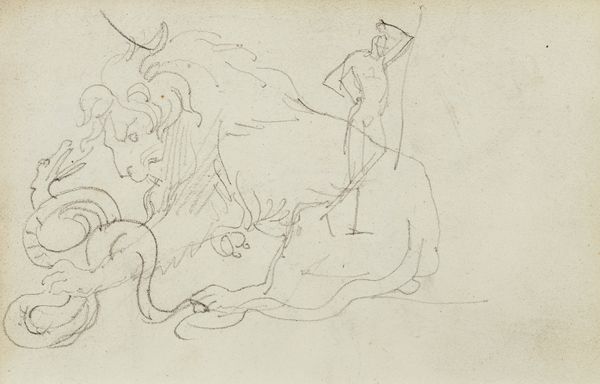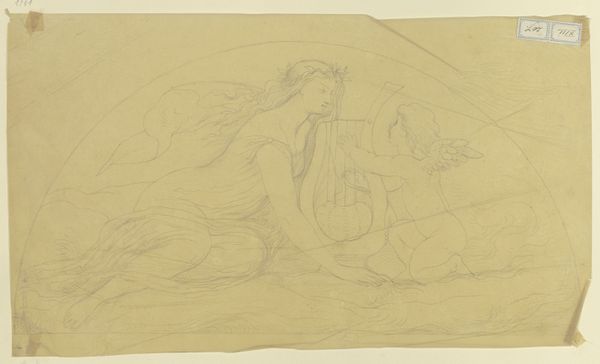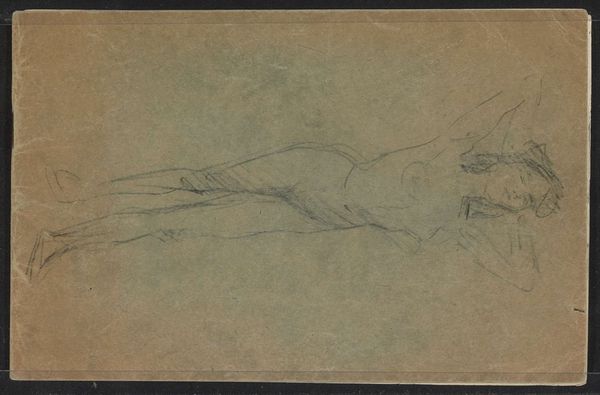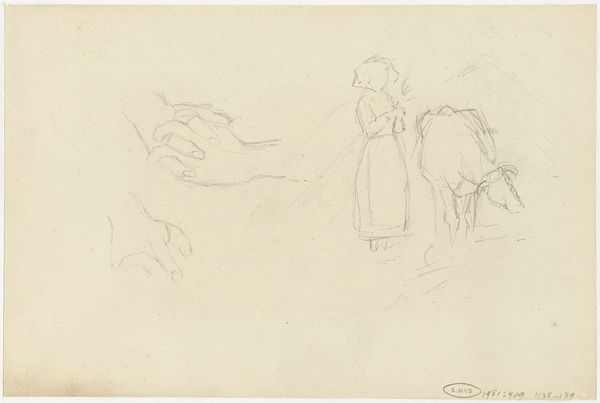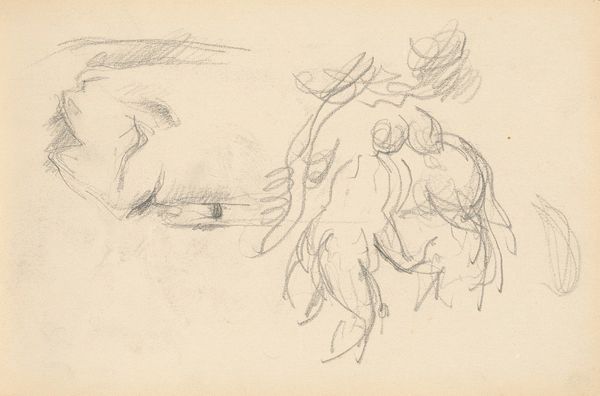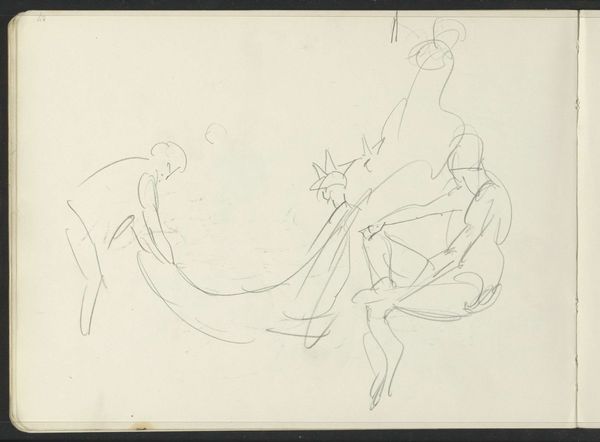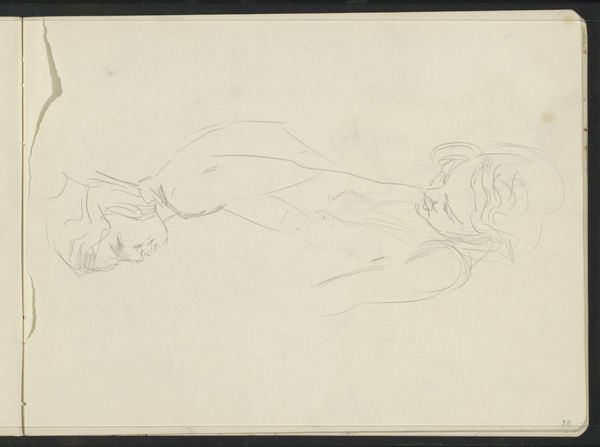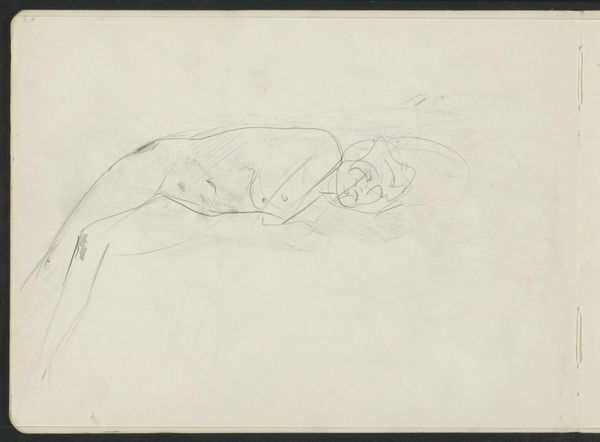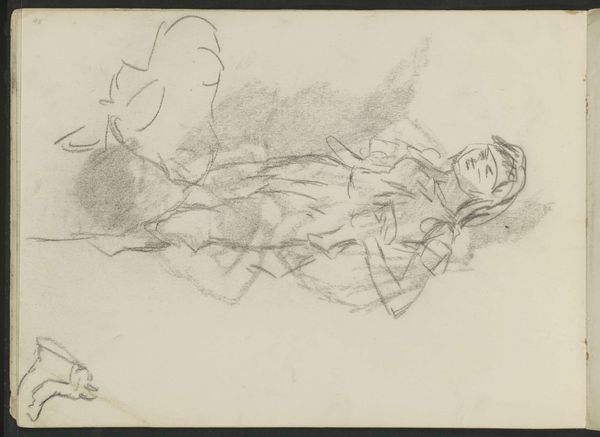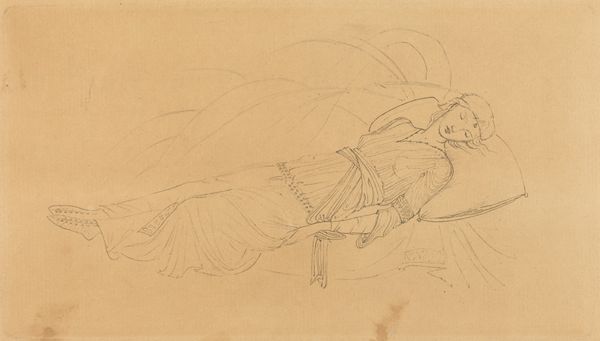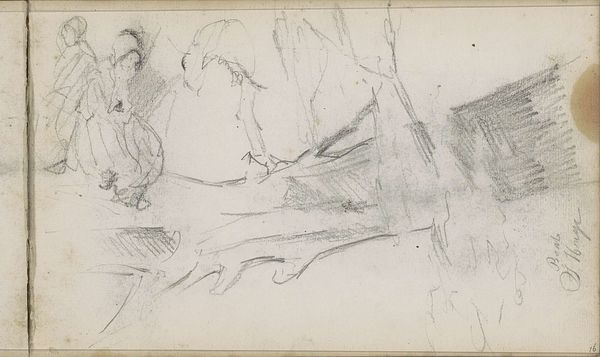![Seated Woman with Crossed Legs [verso] by Mark Rothko](/_next/image?url=https%3A%2F%2Fd2w8kbdekdi1gv.cloudfront.net%2FeyJidWNrZXQiOiAiYXJ0ZXJhLWltYWdlcy1idWNrZXQiLCAia2V5IjogImFydHdvcmtzLzgwZGU5YmU3LWRiMWEtNGYzZi1iZGVlLTA1ZmVjNDhkNDgyZi84MGRlOWJlNy1kYjFhLTRmM2YtYmRlZS0wNWZlYzQ4ZDQ4MmZfZnVsbC5qcGciLCAiZWRpdHMiOiB7InJlc2l6ZSI6IHsid2lkdGgiOiAxOTIwLCAiaGVpZ2h0IjogMTkyMCwgImZpdCI6ICJpbnNpZGUifX19&w=1920&q=75)
drawing, pencil
#
portrait
#
drawing
#
figuration
#
pencil
Copyright: National Gallery of Art: CC0 1.0
Curator: Here we have "Seated Woman with Crossed Legs," a pencil drawing whose artist is Mark Rothko. The verso, the reverse of the paper, contains the drawing that we're observing here today. Editor: It's such a delicate sketch, isn't it? Almost ghostly. The thin pencil lines seem to barely contain the figure, yet there is something inherently human, familiar about her pose, hunched as she is. It suggests contemplation or perhaps fatigue? Curator: Indeed. This drawing is part of a series of figurative works Rothko produced early in his career, before his shift to abstraction. We should understand his evolution through the lens of art history, and in doing so, examine his stylistic beginnings through his Social Realist expression. Editor: And in viewing these figurative works through that lens, it makes one question what his artistic community valued during that time. In a very palpable sense, figuration represents very direct subject/object relationships of the period. So Rothko would then represent real subjects instead of working purely with emotional representation. Curator: Exactly! It illustrates Rothko’s concern with representing the human condition through identifiable images—a clear commitment to addressing a larger audience, politically. Before the cool, detached flatness of the Color Field paintings. It prompts questions of class and the gaze as well as its relation to labor. Editor: Absolutely. There's also a very evident vulnerability in the sketched lines; the lack of firm contour accentuates the female figure's exposed condition. What considerations were there at the time for the gendered figure represented in his artistic, intellectual community? What political messages was the audience able to consume through its depiction? Curator: Those are very valid points, indeed. By understanding the subject in the drawing in context to other artworks of the era, we see that the role of the female subject evolved beyond pure domestic representation. She now occupied and signified something else completely as political subjects of modernity. Editor: Looking at this drawing invites the critical question: Can any representation be free from political ideology? I suppose not, if it is of humanity. I can look at art a bit differently now! Curator: Me too! I find myself pondering this notion of social agency—representation as direct political engagement. And with that final provocation, our time here comes to a close!
Comments
No comments
Be the first to comment and join the conversation on the ultimate creative platform.
